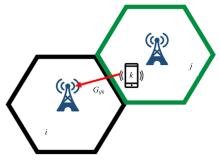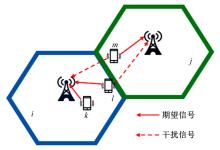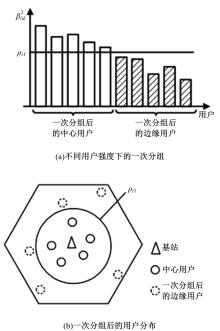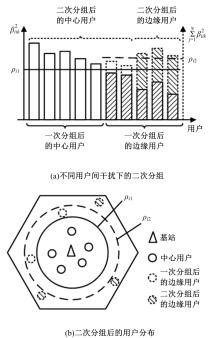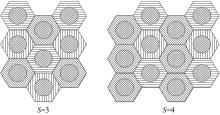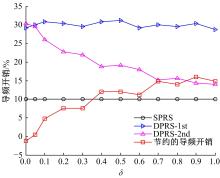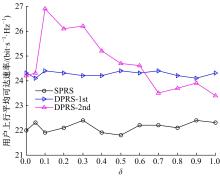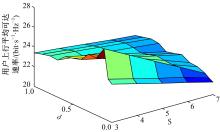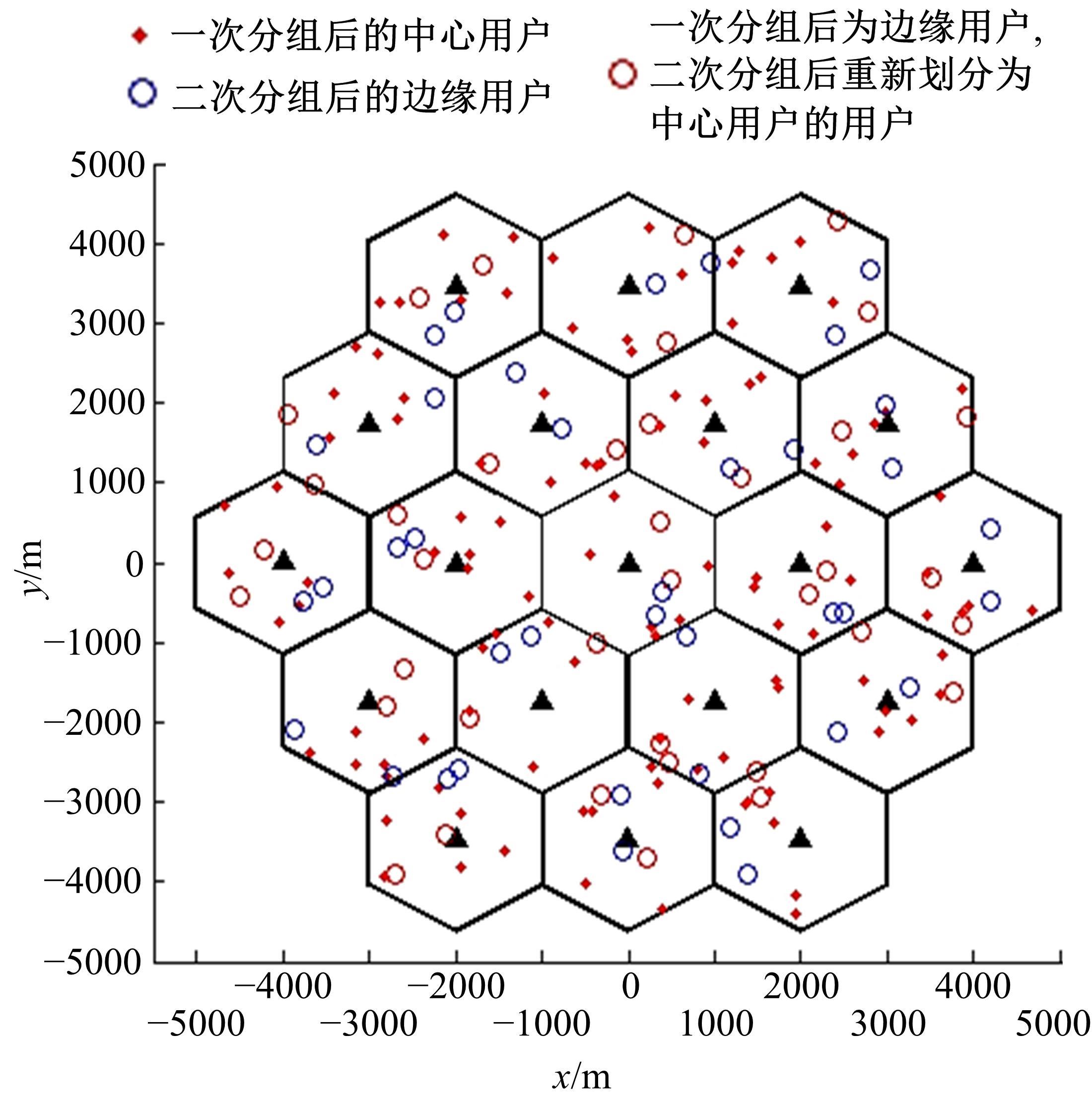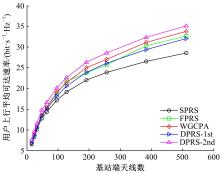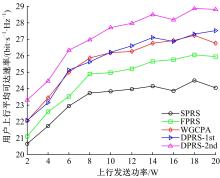Journal of Jilin University(Engineering and Technology Edition) ›› 2021, Vol. 51 ›› Issue (6): 2225-2236.doi: 10.13229/j.cnki.jdxbgxb20200666
Pilot contamination suppression method for massive MIMO system based on divided pilot reuse
Jian-po LI1( ),Peng XUE1,2,Tao YANG3,Mei-lin LI1
),Peng XUE1,2,Tao YANG3,Mei-lin LI1
- 1.School of Computer Science,Northeast Electric Power University,Jilin 132012,China
2.Liaoyuan Power Supply Company,State Grid Jilin Electric Power Co. ,Ltd. ,Liaoyuan 136200,China
3.State Grid Jiangxi Information & Telecommunication Company,Nanchang 330096,China
CLC Number:
- TN929.5
| 1 | Xia X C, Xu K, Wang Y, et al. A 5G-enabling technology: benefits, feasibility, and limitations of in-band full-duplex mMIMO[J]. IEEE Vehicular Technology Magazine, 2018, 13(3): 81-90. |
| 2 | Xu F, Wang H Q, Wang H G, et al. A new constellation coordination and pilot reuse for multi-cell large-scale MIMO systems[J]. IET Communications, 2020, 14(2): 357-363. |
| 3 | Liu L, Yu W. Massive connectivity with massive MIMO-Part I: Device activity detection and channel estimation[J]. IEEE Transactions on Signal Processing, 2018, 66(11): 2933-2946. |
| 4 | Zhang J Y, Chen S F, Lin Y, et al. Cell-free massive MIMO: a new next-generation paradigm[J]. IEEE Access, 2019, 7: 99878-99888. |
| 5 | 孙增友,杨东娜. 基于整体公平的D2D无线资源分配算法[J]. 东北电力大学学报, 2019, 39(1): 81-87. |
| Sun Zeng-you, Yang Dong-na. D2D radio resource allocation algorithm based on global fairness[J]. Journal of Northeast Electric Power University, 2019, 39(1): 81-87. | |
| 6 | Zdogan Z, Bjrnson E, Zhang J Y. Performance of Cell-Free massive MIMO with rician fading and phase shifts[J]. IEEE Transactions on Wireless Communications, 2019, 18(11): 5299-5315. |
| 7 | Zuo J, Zhang J, Yuen C, et al. Multi-cell multi-user massive MIMO transmission with downlink training and pilot contamination precoding[J]. IEEE Transactions on Vehicular Technology, 2016, 65(8): 6301-6314. |
| 8 | 王义君,张有旭,缪瑞新,等. 5G中基于系统中断概率的D2D资源分配算法[J]. 吉林大学学报:工学版,2021,51(1):331-339. |
| Wang Yi-jun, Zhang You-xu, Miao Rui-xin, et al. D2D resource allocation algorithm based on system outage probability in 5G[J]. Journal of Jilin University(Engineering and Technology Edition), 2021, 51(1): 331-339. | |
| 9 | Xia X C, Xu K, Zhang D M, et al. Beam-domain full-duplex massive MIMO: realizing co-time co-frequency uplink and downlink transmission in the cellular system[J]. IEEE Transactions on Vehicular Technology, 2017, 66(10): 8845-8862. |
| 10 | 邬春明,尚恒蕾. 基于QoS的D2D资源分配算法[J]. 东北电力大学学报,2020,40(2):89-95. |
| Wu Chun-ming, Shang Heng-lei. QoS-aware resource allocation for D2D communications[J]. Journal of Northeast Electric Power University, 2020, 40(2): 89-95. | |
| 11 | 路新华,王忠勇,张传宗,等.大规模MIMO系统上行链路时间-空间结构信道估计算法[J].电子与信息学报,2020,42(2):519-525. |
| Lu Xin-hua, Wang Zhong-yong, Zhang Chuan-zong, et al. Channel estimation algorithm using temporal-spatial structure for up-link of massive MIMO systems[J]. Journal of Electronics & Information Technology, 2020, 42(2): 519-525. | |
| 12 | Ali W A, Anis W R, Elshenawy H A. Spectral efficiency enhancement in massive MIMO system under pilot contamination[J]. International Journal of Communication Systems, 2020, 33(11): No. e4342. |
| 13 | Chen J, Chen H B, Zhang H, et al. Spectral-energy efficiency tradeoff in relay-aided massive MIMO cellular networks with pilot contamination[J]. IEEE Access, 2016, 4: 5234-5242. |
| 14 | 曹海燕,马子昌,杨晓慧,等. 大规模MIMO系统中基于用户位置和用户分类的导频分配[J]. 电信科学,2019,35(10):92-99. |
| Cao Hai-yan, Ma Zi-chang, Yang Xiao-hui, et al. Pilot allocation based on users' location and user classification in massive MIMO system[J]. Telecommunications Science, 2019, 35(10): 92-99. | |
| 15 | Parida P, Dhillon H S. Stochastic Geometry-based uplink analysis of massive MIMO systems with fractional pilot reuse[J]. IEEE Transactions on Wireless Communications, 2019, 18(3): 1651-1668. |
| 16 | Yuan W N, Yang X K, Xu R. A novel pilot decontamination scheme for uplink massive MIMO systems[J]. Procedia Computer Science, 2018, 131: 72-79. |
| 17 | 于银辉,周恒,杨莹,等. 大规模MIMO系统基于小区分类-交叉熵的导频调度算法[J]. 通信学报,2018,39(12):75-81. |
| Yu Yin-hui, Zhou Heng, Yang Ying, et al. Pilot scheduling algorithm based on cell classification-cross entropy for massive MIMO[J]. Journal on Communications, 2018, 39(12): 75-81. | |
| 18 | Fan J C, Li W Q. Analysis and optimization of fractional pilot reuse in massive MIMO systems[C]∥2017 IEEE 85th Vehicular Technology Conference, Sydney, NSW, Australia, 2017: No.17375841. |
| 19 | 李梦婉,景小荣,莫林琳. 多小区大规模MIMO系统中基于部分导频交替复用的导频污染减轻方法[J]. 信号处理,2017,33(8):1104-1114. |
| Li Meng-wan, Jing Xiao-rong, Mo Lin-lin. Pilot contamination reduction method with alternately fractional pilot reuse for multi-cell massive MIMO systems[J]. Journal of Signal Processing, 2017, 33(8): 1104-1114. | |
| 20 | Fan J, Li W, Zhang Y. Pilot contamination mitigation by fractional pilot reuse with threshold optimization in massive MIMO Systems[J]. Digital Signal Processing, 2018, 78: 197-204. |
| 21 | 王金鹏,叶政鹏,曹帆,等. 5G移动通信中基于同频干扰分布的协同分布式天线传输系统[J]. 吉林大学学报:工学版,2020,50(1):333-341. |
| Wang Jin-peng, Ye Zheng-peng, Cao Fan, et al. Cooperative distributed antenna transmission method based on co-channel interference in 5G mobile communication system[J]. Journal of Jilin University(Engineering and Technology Edition), 2020, 50(1): 333-341. | |
| 22 | 滕志军,滕利鑫,谢露莹,等. 基于多态蚁群优化算法的认知无线电动态频谱接入策略[J]. 江苏大学学报:自然科学版,2020,41(2):230-236. |
| Teng Zhi-jun, Teng Li-xin, Xie Lu-ying, et al. Dynamic spectrum access strategy based on improved polymorphic ant colony algorithm in cognitive radio[J]. Journal of Jiangsu University(Natural Science Edition), 2020, 41(2):230-236. | |
| 23 | 周硕,杨帆. 混合矩阵的二次特征值反问题及其最佳逼近[J]. 东北电力大学学报,2018,38(4):85-89. |
| Zhou Shuo, Yang Fan. Inverse quadratic eigenvalues problem for mixed matrix and its optimal approximation[J]. Journal of Northeast Electric Power University, 2018, 38(4): 85-89. | |
| 24 | 陆莉莉,季一木,孙延鹏,等. FLASH P2P协议及其应用分析[J]. 江苏大学学报:自然科学版,2016,37(5):585-590. |
| Lu Li-li, Ji Yi-mu, Sun Yan-peng, et al. Application and analysis of FLASH P2P protocol[J]. Journal of Jiangsu University(Natural Science Edition), 2016, 37(5): 585-590. |
| [1] | Da-yang SUN,Xue-ying WANG,Shuang-xue HAN,Hui ZHONG,Jiang-nan DAI. Non⁃line⁃of⁃sight identification and optimization based on virtual coordinates of anchors [J]. Journal of Jilin University(Engineering and Technology Edition), 2021, 51(6): 2207-2215. |
| [2] | Yi LIU,Ling-ling XIAO,Gai-jing WANG,Wu-jun ZHANG. Resource allocation algorithm based joint optimization for D2D communications in cellular networks [J]. Journal of Jilin University(Engineering and Technology Edition), 2020, 50(1): 306-314. |
| [3] | Jin-peng WANG,Zheng-peng YE,Fan CAO,Nian-yu ZOU. Cooperative distributed antenna transmission method based on co-channel interference in 5G mobile communication system [J]. Journal of Jilin University(Engineering and Technology Edition), 2020, 50(1): 333-341. |
| [4] | Cui-ran LI,Yong-sheng YU,Jian-li XIE. Dynamic game algorithm for spectrum sharing based on priority of secondary users [J]. Journal of Jilin University(Engineering and Technology Edition), 2020, 50(1): 315-323. |
| [5] | Wen-jun LI,Qiang HUA,Li-dong TAN,Yue SUN. An improved algorithm for combination of DV-HOP and RSSI [J]. Journal of Jilin University(Engineering and Technology Edition), 2019, 49(5): 1689-1695. |
| [6] | Hong-yan WANG,Yun-fei FANG,Sheng-qi ZHU,Bing-nan PEI. DOA estimation method considering mutual coupling effect in presence of non⁃uniform noise [J]. Journal of Jilin University(Engineering and Technology Edition), 2019, 49(5): 1706-1714. |
| [7] | Yong LIU,Fang⁃shun DENG,Xiao⁃lin LIU,Si⁃jie MIN,Peng WANG. Frequency estimation of minimum shift keying signal based on dual chaotic oscillator [J]. Journal of Jilin University(Engineering and Technology Edition), 2019, 49(4): 1357-1362. |
| [8] | Hong⁃zhi WANG,Fang⁃da JIANG,Ming⁃yue ZHOU. Power allocation of cognitive radio system based on genetic particle swarm optimization [J]. Journal of Jilin University(Engineering and Technology Edition), 2019, 49(4): 1363-1368. |
| [9] | ZHOU Yan-guo,ZHANG Hai-lin,CHEN Rui-rui,ZHOU Tao. Two-level game approach based resource allocation scheme in cooperative networks [J]. Journal of Jilin University(Engineering and Technology Edition), 2018, 48(6): 1879-1886. |
| [10] | SUN Xiao-ying, HU Ze-zheng, YANG Jin-peng. Assessment method of electromagnetic pulse sensitivity of vehicle engine system based on hierarchical Bayesian networks [J]. 吉林大学学报(工学版), 2018, 48(4): 1254-1264. |
| [11] | DONG Ying, CUI Meng-yao, WU Hao, WANG Yu-hou. Clustering wireless rechargeable sensor networks charging schedule based on energy prediction [J]. 吉林大学学报(工学版), 2018, 48(4): 1265-1273. |
| [12] | DING Ning, CHANG Yu-chun, ZHAO Jian-bo, WANG Chao, YANG Xiao-tian. High-speed CMOS image sensor data acquisition system based on USB 3.0 [J]. 吉林大学学报(工学版), 2018, 48(4): 1298-1304. |
| [13] | MOU Zong-lei, SONG Ping, ZHAI Ya-yu, CHEN Xiao-xiao. High accuracy measurement method for synchronous triggering pulse transmission delay in distributed test system [J]. 吉林大学学报(工学版), 2018, 48(4): 1274-1281. |
| [14] | CHEN Rui-rui, ZHANG Hai-lin. Performance analysis of 3D millimeter wave communications [J]. 吉林大学学报(工学版), 2018, 48(2): 605-609. |
| [15] | GUAN Ji-shi, SHI Yao-wu, QIU Jian-wen, SHAN Ze-biao, SHI Hong-wei. New algorithm to estimate characteristic exponent of α-stable distribution [J]. 吉林大学学报(工学版), 2018, 48(2): 618-624. |
|
||
